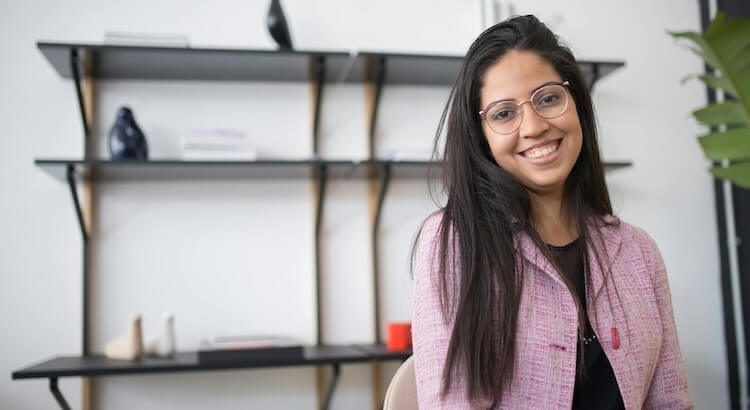Understanding Video Captions: Open vs. Closed Captions Explained
Whenever you watch a YouTube video, a movie, or any digital video, you might notice words appearing at the bottom of the screen. These words are called captions. Captions play a key role in making videos accessible to everyone, especially people who are deaf or hard of hearing.
This guide will help you understand the differences between open and closed captions, why captions matter, and how to choose the right captioning style for your videos.
The Importance of Captioning
Captions are not new. They first appeared on U.S. television in the 1970s to help people with hearing loss enjoy TV shows fully. Over time, captioning has become a standard for online videos, streaming content, and social media.
- Over 430 million people worldwide have disabling hearing loss (WHO, 2021).
- By 2050, that number may reach 2.5 billion (WHO, 2021).
- 83% of U.S. viewers watch videos with the sound off (Yahoo/Verizon Media, 2019).
- 99% of students found captions helped them learn from videos (University of South Florida, 2016).
With so many people watching videos on mute or with hearing difficulties, captions are more important than ever.
Why Do Viewers Watch Videos Without Sound?
- In public places, playing audio can be rude or disturbing.
- Noisy environments make listening hard, even with headphones.
- Some platforms, like Facebook, autoplay videos on mute.
- People may prefer reading along while doing other tasks.
Captions Boost Engagement and SEO
- Captions keep viewers watching longer and improve comprehension.
- Search engines cannot "watch" videos, but they can index text from captions, helping your SEO.
- Keywords in captions increase your chances to appear in search results.
Businesses and content creators use captions to reach more people and improve their online presence. You can start captioning your videos using [professional captioning services](https://gotranscript.com/closed-captioning-services).
Captioning Rules and Federal Guidelines
Captioning is regulated to make content accessible for all. The Federal Communications Commission (FCC) provides specific rules for captions in the United States.
Key FCC Captioning Guidelines
- All spoken words, important sounds, and speaker IDs must be included.
- Non-essential information may be left out for readability.
- Lines must be no longer than 37 characters, and a maximum of two lines at once.
- Captions should display at least two seconds per sentence.
- Reading speed should not exceed three words per second.
For more on captioning standards for your content, check out [GoTranscript’s closed caption services](https://gotranscript.com/closed-captioning-services).
Captions vs. Subtitles: What’s the Difference?
People often confuse captions with subtitles, but they serve different purposes.
- Captions are for viewers who cannot hear audio. Captions show all spoken words, sound effects, and information about who is speaking.
- Subtitles help viewers who do not understand the audio language. Subtitles translate or transcribe spoken words but usually do not include sound effects or speaker IDs.
- SDH (Subtitles for the Deaf and Hard of Hearing) combine both; they include non-speech audio along with translations or transcriptions.
If your viewers are deaf or hard of hearing, captions or SDH are required. For non-English audiences, subtitles may be best. You can find support for both [subtitling](https://gotranscript.com/subtitling-services) and [text translation](https://gotranscript.com/text-translation-services) services.
Open Captions vs. Closed Captions: The Main Differences
Open Captions
- Open captions are “burned in” to the video and always visible.
- Viewers cannot turn them off; they are part of the video itself.
- Work on any device or player, including platforms that do not support closed captions.
- Creators can choose text style, size, and placement without platform restrictions.
- Great for social media where videos autoplay silently (Facebook saw 12% higher video view time with open captions, Facebook Business, 2016).
- Ideal for offline use or physical media, since no extra files are needed.
When Should You Use Open Captions?
- Your video will be played on platforms that do not support closed captions (Instagram, Twitter, Snapchat).
- You want every viewer to see the text — no matter what device they use.
- Your audience may not know how to enable closed captions.
- You need consistency in caption appearance across all devices.
- You are producing content for public spaces or screens with no user controls.
Closed Captions
- Closed captions are separate from the video file as “sidecar” files (like .srt).
- Viewers can choose to turn them on or off.
- Platforms like YouTube and TV channels support this feature.
- Easy to create and edit — you can update the caption file without changing the video itself.
- Gives viewers choice and freedom to decide whether or not to use captions.
When Should You Use Closed Captions?
- Your platform or device supports selectable captions (YouTube, Vimeo, streaming services).
- You want to give viewers control over their experience.
- You expect to make edits or translations in the future.
- Some viewers may find captions distracting and want to turn them off.
To add closed captions easily, try [GoTranscript’s automated transcription service](https://gotranscript.com/automated-transcription-services) or read more about [AI transcription subscriptions](https://gotranscript.com/ai-transcription-subscription).
Which Is Better: Open or Closed Captions?
- Open captions make your video universally accessible but remove the viewer’s choice.
- Closed captions offer flexibility but rely on platform support and user knowledge.
- For most business, educational, or marketing videos, closed captions strike the best balance.
- For social media marketing and public displays, open captions are often better.
Remember, both open and closed captions improve accessibility, viewer satisfaction, and discoverability. If you need help deciding or want to get started, you can order captions with GoTranscript.
Maximize the Benefits of Captions
- Improve your SEO by providing accurate, keyword-rich captions and transcripts ([learn more about transcription services](https://gotranscript.com/transcription-services)).
- Expand your audience with [audio translation services](https://gotranscript.com/audio-translation-services).
- Keep costs down by checking transparent [captioning services pricing](https://gotranscript.com/cheap-captioning-rates) and [transcription pricing](https://gotranscript.com/cheap-transcription-rates).
- Ensure accuracy with [transcription proofreading](https://gotranscript.com/transcription-proofreading-services).
Conclusion: Open and Closed Captions Make Videos Accessible to All
Captions make videos easy to enjoy for everyone. Open captions guarantee accessibility everywhere, while closed captions offer flexibility and user choice. Both types boost viewer engagement, improve learning outcomes, and support your SEO efforts.
If you want to make your videos accessible, easy to find, and audience-friendly, GoTranscript’s captioning solutions can help. From manual to automated captioning and translations, you will find the right services to fit your needs and budget.



















 Verified Order
Verified Order